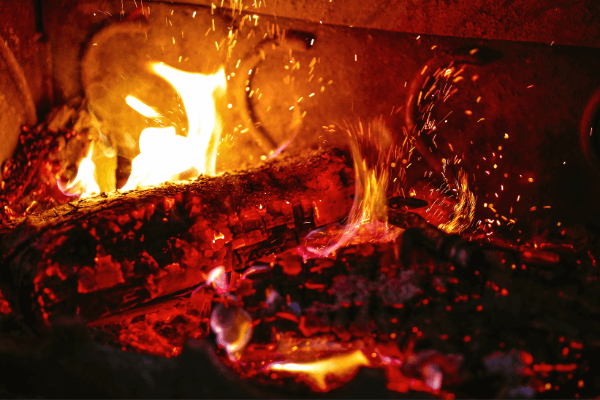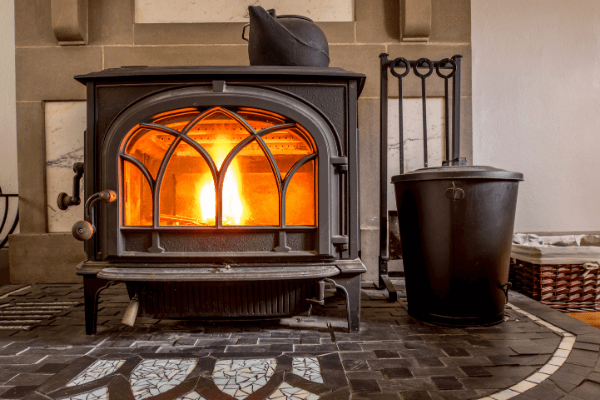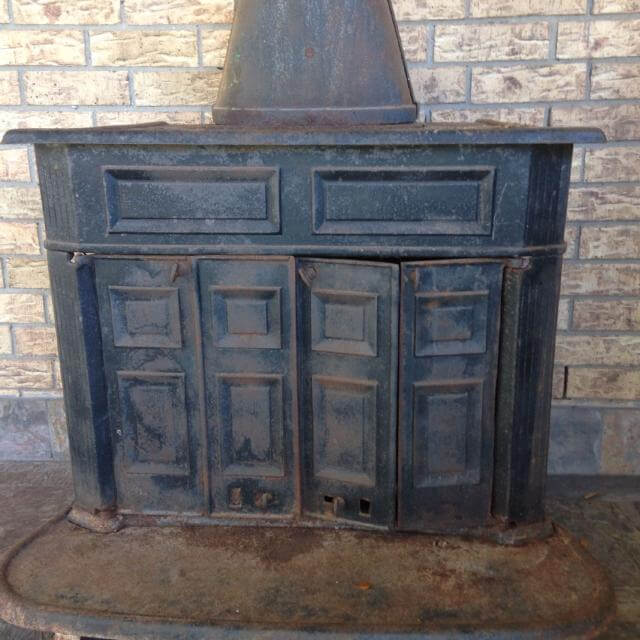- Home
- Best Wood Stoves
- Franklin Wood Stove
Franklin Wood Stove
This post may contain affiliate links so I earn a commission.
The Franklin wood stove is a free standing, cast iron fireplace insert created in 1741 by Benjamin Franklin.
Benjamin Franklin is the founder of various great inventions and known for his great impact on society.
One of his favorite inventions is the Franklin stove.
In the 18th century, indoor fireplaces were very common, and many people passed away because of the various dangers posed by house fires.
A severe shortage of firewood had also brought the need for a heating source that could reduce firewood consumption.
So, Franklin made his stove to address these problems.
The Franklin Wood Stove Design
Also referred to as a Pennsylvania fireplace or a circulating stove, the design used two distinctive features, a hollow baffle and an inverted siphon to harness more of the fire's heat when compared to an ordinary open fireplace.
The inverted siphon is basically a U-shaped flue that draws the hot burning gasses of the fire up and over the hollow baffle positioned in the back of the stove.

The heated air inside the baffle is then expelled into the room through two holes near the top of the stove.
The free standing stove is completely open in the front, and if placed in the center of a room, it can radiate heat from all sides.
However, the stoves original design had one major flaw, it created a poor draft due to the inverted siphon.
As the smoke entered the flue, it cooled off too much before it reached the chimney reducing the draft.
In order for the draft to function properly, the fire had to burn continuously to keep the flue hot enough to create a strong draft.
Do to this flaw, the stove sold poorly.
How Does The Stove Work?
Franklin drew his inspiration from the work of Jean Desaguliers and Franz Kessler.
He carefully worked to develop a fireplace that would lengthen burn time and produce more heat from fewer pieces of firewood.
His goal was to reduce house fires and the hazards associated with having open fires inside the house.
He was inspired by Kessler's inverted siphon to extract combustion gases more efficiently.
Franklin's fireplace was meant to remove as much heat as possible from the gases while pulling out the byproducts from the fireplace through a chimney.

The Franklin Stove was made of cast iron as a substitute for
other masonry constituents.
The design was inspired by Desagulier's experiments that show that cast iron was a better radiator of heat compared to traditional open fireplaces.
Franklin realized that using metal offered a superior yet steady and calm heat that was more effective at heating a house.
The original Franklin wood stove was designed with a firebox at the bottom of the fireplace to exit smoke and other combustion byproducts, which caused some functional problems.
Because smoke rises, the initial design of the Franklin stove did not work effectively and caused problems.
However, even with these flaws, the stove was still safer than old-fashioned open burning fireplaces of the era.
The Franklin stove made a great impact on people throughout the country as it increased fireplace safety and saved many lives.
 Modern Wood Stove
Modern Wood StoveOver time, Franklin's fireplace design was developed by others, and technologies led to the modern stoves you know.
Modern stoves are highly efficient and are designed with the latest technologies in order to offer consumers an impeccable experience.
Franklin never patented his stove, which allowed many others to improve on its design and ultimately make it more efficient and effective.
The greatest improvement came in 1780 by David Rittenhouse, which used an L-shaped flue to vent smoke out through a chimney, which made the stove become much more popular.
Installing A Franklin Wood Stove
1. Check your local building codes for assistance in installing your stove at the right distance from flammable walls. You need to place the stove on a fireproof pad. Check the distance from the furniture, ceiling, and walls.
2. If you bought a new stove, follow the manual to attach the legs.
3. Put the stove standing and install the chimney adapter and washer. The chimney is placed over the hole, either at the top or at the back of the stove case, to enable smoke to escape through the chimney. Put the fireproof lining at the base of the chimney adapter and fasten it with screws.
4. Set the grille and ash tray inside the stove. The ash pan is put under the grille, which has holes to allow ash to fall to the ash pan.
5. Put the stove on a fireproof platform and connect the flue to your home's chimney.
Using A Franklin Wood Stove Today
Compared to today's more modern wood stoves, the Franklin wood stove is inferior when comparing firewood usage and most importantly, safety.
Back in the 1970s, Montgomery Wards sold a ton of these stoves.
They typically had three legs and a set of bifold doors on the front.
They're designed to be burned with the doors open, and they burned really hot, which is nice for heat output, but very unsafe.
 Franklin Wood Stove
Franklin Wood StoveThe doors on the front are basically used to seal the unit when it's not in use, making it more of a fireplace than a true wood stove by today's standards.
Franklin stoves are extremely inefficient and burn a lot of firewood.
Plus, they smoke profusely during use and the fires inside are hard to control, often resulting in over firing (burning too hot) and creating a fire hazard in your home.
Now, many homeowners have replaced these stoves with more modern, efficient, and safe wood stoves.
In fact, most homeowners and professionals will agree a Franklin is better suited as an ornamental planter in your garden than a functioning stove.
Overall
If you're looking to purchase a wood burning stove for your home, I would not recommend installing a Franklin wood stove.
Even though you can still find them online or maybe from a friend, the stoves are just too dangerous and not efficient enough to install in your home.
However, of all his efforts, Franklin is justly credited for his efforts to reduce the threat of house fires during his time.
Look for a more modern wood burning stove that will burn far less firewood, smoke less, and be safer for you to use.

About the Author
Obsessed with firewood, Nick is behind over 350+ of Firewood For Life's articles, as well as countless reviews, guides and YouTube videos to help readers like you reduce heating costs and create the perfect fire.


